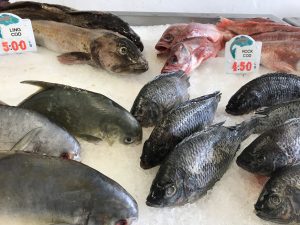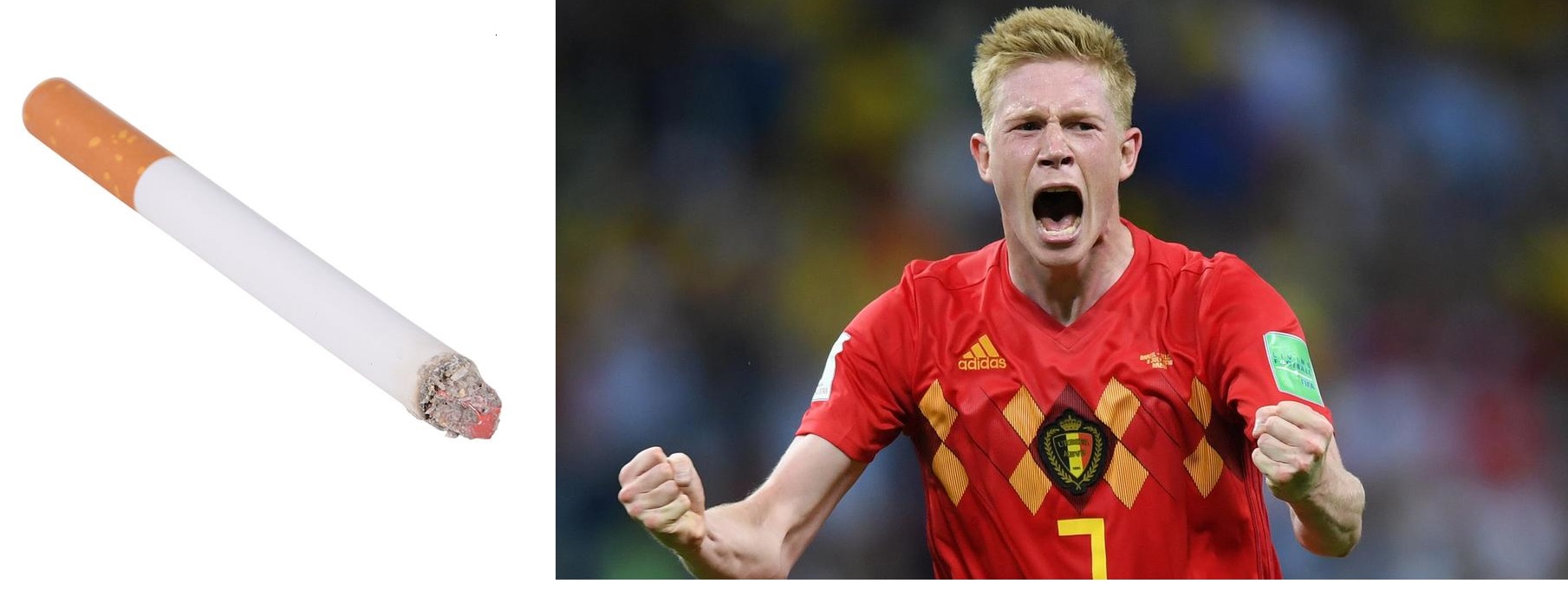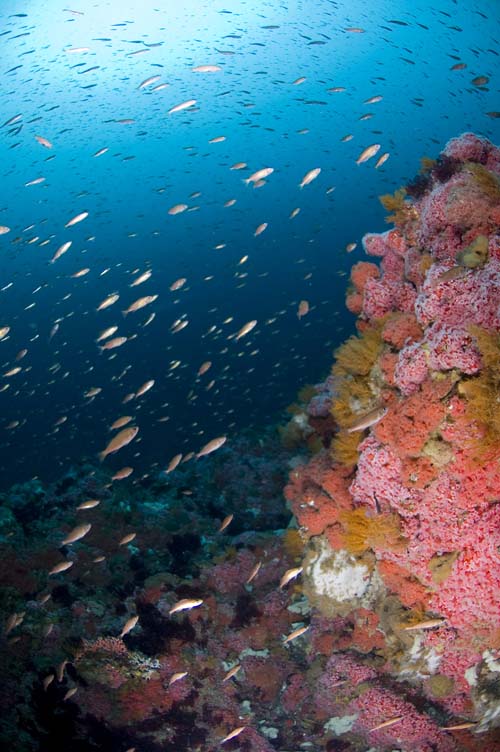 Transparency and traceability within food systems is by no means a new concept-but has gained attention in recent years. Prominent in the seafood industry, the two T’s can provide valuable insight as to the “whom, what, when, where and how” of the product. Continue reading
Transparency and traceability within food systems is by no means a new concept-but has gained attention in recent years. Prominent in the seafood industry, the two T’s can provide valuable insight as to the “whom, what, when, where and how” of the product. Continue reading
Monthly Archives: July 2018

Franken-guana
What do you get when you mix one policy wonk, a house full of scientists, and an island full of endemic iguanas and beaches covered in plastic? A FRANKEN-GUANA! Continue reading

The Good plastic, the Bad plastic, and the Ugly plastic
July has been a month of travel and hectic scheduling. I’ve been to three islands working on three different programs, all with the goal of making disposable plastic waste a thing of the past in the Bay Islands of Honduras.
Plastic comes in all types of forms, some good and some bad, but more often than not plastic becomes something very ugly when we decide to throw it out. Plastic is meant to last forever, which is why it seems mind-boggling that disposable plastic has become such a commonplace aspect of our lives. My job in the Bay Islands this summer, along with Eliana and Saba, is to work with businesses, schools, nonprofits, and government agencies to tackle the wicked problem of disposable plastics.

A week in Raja Ampat with Rare Indonesia
Last night I returned from a whirlwind adventure…I mean a week of field work…with Rare Indonesia in Raja Ampat, West Papua, Indonesia. Over the course of the past 8 days, I traveled on 4 planes, 5 boats, visited 2 cities, and 3 villages, met countless insightful and passionate local villagers and learned invaluable information about the Dampier Strait MPA system. Continue reading

Working with youth leaders on the Bay Islands
I am working as the Education and Outreach Fellow with Think Beyond Plastic on the Bay Islands of Honduras to raise awareness of the marine plastic pollution problem and encourage local solutions.

Man, it’s unreal that we’re already halfway through our project here! Time has literally flown by! In the past month I’ve been able to organize and coordinate the Ocean Ambassador Program and Plastic Free Schools Campaign with students from all three Bay Islands. I just returned from Bay Island’s smallest island, Guanaja where I completed training and preparation to launch a plastic reduction competition among the island’s public schools. Students will be collecting the plastic from their daily consumption, documenting their reduction efforts, and creating a mural/recycled art show at the end of the competition with the plastic they collected! Continue reading

How do we fix the way we fix things?
The study of science, no doubt, is of utmost importance. An understanding of the body of laws that govern our natural world, biological processes and ecological principles, in my opinion, is some of the foremost valuable knowledge that one can possess, and we must continue to develop this cognizance. When it comes to protecting human wellbeing from the irrefutable ills that we have caused ourselves and this planet however, which I will categorize under the catchall of climate change, at what point can we all agree that there is ample scientific evidence to catalyze tangible action? Or is it something more than that, a fear to face the problems of our future head on, an inability to see that such endeavors are now in pretty much everyone’s own self interest, or simply bystanders along for the ride at any rate? Perhaps it is an unwillingness to give up some petty comforts? Let me tell ya’ folks, things are about to become a whole lot less comfortable. Continue reading

Cigarettes and Kevin De Bruyne
What do cigarettes and Kevin De Bruyne have in common? Absolutely nothing! But somehow we are using them to look at a vexing issue:
Bans and levies on plastic straws, bags, and bottles seems to be in vogue, but are they effective?

Conservation Enforcement
The main reason why I am out in Pohnpei is to work with the Community Conservation Officers and Department of Fish and Wildlife to come up with a training program and recommendations for improvements to different conservation enforcement programs, in particular the rangers of Ant Atoll, OneReefs main focus so far in Pohnpei. Prior to my decision to come to MIIS, I was a police officer at the California State University Monterey Bay and prior to that I had done numerous support jobs such as records and evidence and being a Community Service Officer, in total I spent almost four years working for a police department, hence my being sent to basically do law enforcement consulting in Pohnpei. Continue reading

Unveiling Mysteries: Cordell Bank National Marine Sanctuary
Underwater photography and advancements in technology have provided us views of life under the ocean surface. Photographers from National Geographic, and the like, have connected us to the ocean and the marine creatures that were once a complete mystery to humans. Although I have been mesmerized by many ocean images, perhaps none have left me in awe quite like the photos of Cordell Bank National Marine Sanctuary. I found myself lost in the magnificence of the photos — from the bright orange and pink invertebrates to the thousands of rockfish circling in the background. These photos of Cordell Bank, as well as my conversations with those engaging with the sanctuary highlighted the beauty, the productivity, and the mystery there. Continue reading
The Roundup and Rambling
My research at Conservation International deals with expanding Community-based Natural Resource Management (CBNRM) across the Coral Triangle region encompassing Indonesia, the Philippines, Malaysia, Papua New Guinea, Solomon Islands, and Timor Leste. Of approximately 43,000 coastal communities in the region, 2,500 have CBNRM in place. Conservation International wants to double this number by 2026 or so, implying a ten-percent growth rate per year. Simultaneously, they wish to reach another 20,000 communities with knowledge-sharing materials (storybooks, videos, gamification, etc.) to teach them about CBNRM and inspire them to begin organizing themselves as well.
Examples of this expansion can be found in Papua New Guinea with the Ecocustodian Advocates who use inter-community teaching and simple tools to reach other population. Expanding the Reach is another effort in Solomon Islands and is based in the government. consisting of peer-to-peer teaching. This initiative is becoming part of mainstream operations in the country, reflecting several government trends in the regions. A network of Locally Managed Marine Areas in Indonesia is also working with Conservation International to expand, and consists already of over 100 communities. Combined with all of the other NGOs’ initiatives in the area, serious investments are flowing into this approach to manage the highly diverse marine resources in the region. Continue reading


